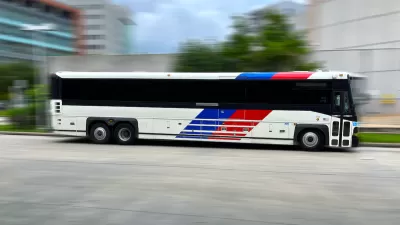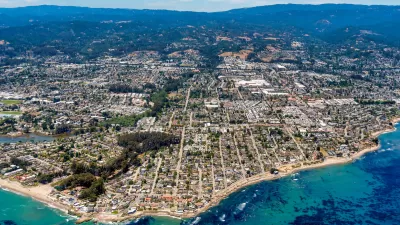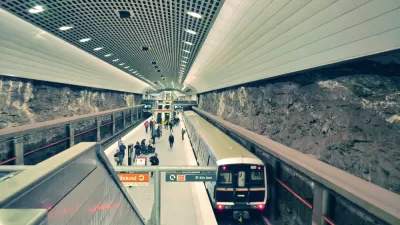A comprehensive list of public transit expansions and new lines that opened in 2024, and projections for 2025.

In a piece for The Transport Politic, Yonah Freemark outlines transit projects that began operating in U.S. cities in 2024 and looks ahead to projects that will open in 2025.
According to Freemark, “Cities throughout the United States opened very little transit in 2024, adding just 29 kilometers (18 miles) of light rail and no new metro rail service. Though Seattle added some notable new expansions—including an extension north to Lynnwood of its successful light rail route and the first phase of a second line to Bellevue—the only other US light rail expansions were short additions in Los Angeles and Phoenix.” However, other types of transit such as bus rapid transit (BRT) lines opened in Indianapolis, Madison, and Seattle.
Substantial light rail or streetcar projects are coming to some cities. “In 2025, Kansas City will more than double the length of its Main Street streetcar line. Los Angeles will add new mileage to its A Line, reaching Pomona; south of LA, Orange County will open a new streetcar line. In Phoenix, the South Central Corridor will create a branch for the city’s light rail route. Finally, in Seattle, the city’s Line 2 will extend north to Redmond and west from Bellevue into downtown Seattle.” Los Angeles, Dallas, the San Francisco Bay Area, and Portland, Oregon currently have the longest light rail networks in the nation.
See the source article for a full list of transit projects that opened in 2024 or are slated to start running in 2025.
FULL STORY: Transit Expansion in the United States: A 2024 Roundup and a Look Ahead to 2025

Manufactured Crisis: Losing the Nation’s Largest Source of Unsubsidized Affordable Housing
Manufactured housing communities have long been an affordable housing option for millions of people living in the U.S., but that affordability is disappearing rapidly. How did we get here?

Americans May Be Stuck — But Why?
Americans are moving a lot less than they once did, and that is a problem. While Yoni Applebaum, in his highly-publicized article Stuck, gets the reasons badly wrong, it's still important to ask: why are we moving so much less than before?

Using Old Oil and Gas Wells for Green Energy Storage
Penn State researchers have found that repurposing abandoned oil and gas wells for geothermal-assisted compressed-air energy storage can boost efficiency, reduce environmental risks, and support clean energy and job transitions.

Updating LA’s Tree Rules Could Bring More Shade to Underserved Neighborhoods
A new USC study finds that relaxing Los Angeles’ outdated tree planting guidelines could significantly expand urban tree canopy and reduce shade disparities in lower-income neighborhoods, though infrastructure investments are also needed.

California's Canal Solar Projects Aim to Conserve Resources and Expand Clean Energy
California’s Project Nexus has begun generating electricity from solar panels installed over irrigation canals, with researchers and state agencies exploring statewide expansion to conserve water and boost clean energy production.

HHS Staff Cuts Gut Energy Assistance Program
The full staff of a federal program that distributes heating and cooling assistance for low-income families was laid off, jeopardizing the program’s operations.
Urban Design for Planners 1: Software Tools
This six-course series explores essential urban design concepts using open source software and equips planners with the tools they need to participate fully in the urban design process.
Planning for Universal Design
Learn the tools for implementing Universal Design in planning regulations.
Heyer Gruel & Associates PA
City of Moreno Valley
Institute for Housing and Urban Development Studies (IHS)
City of Grandview
Harvard GSD Executive Education
Salt Lake City
NYU Wagner Graduate School of Public Service
City of Cambridge, Maryland





























